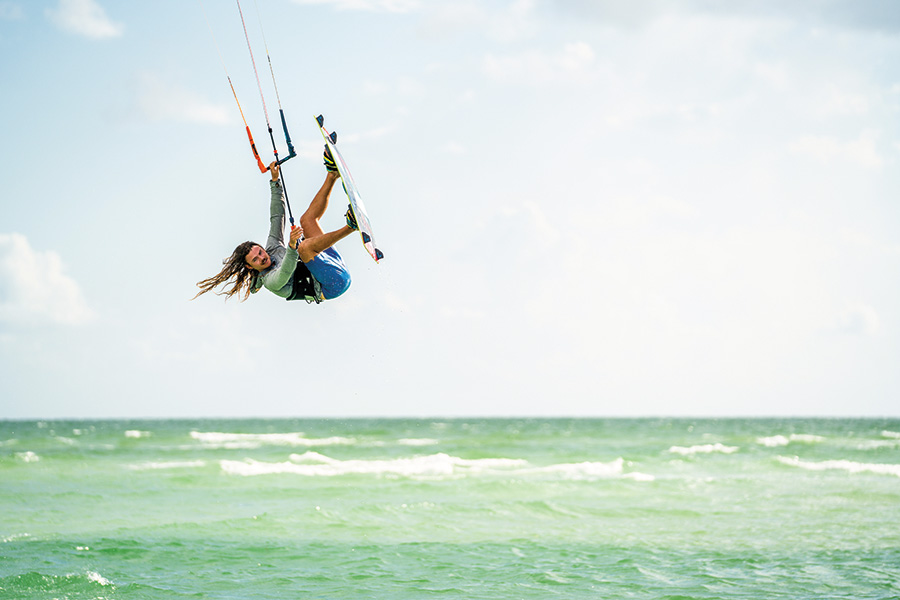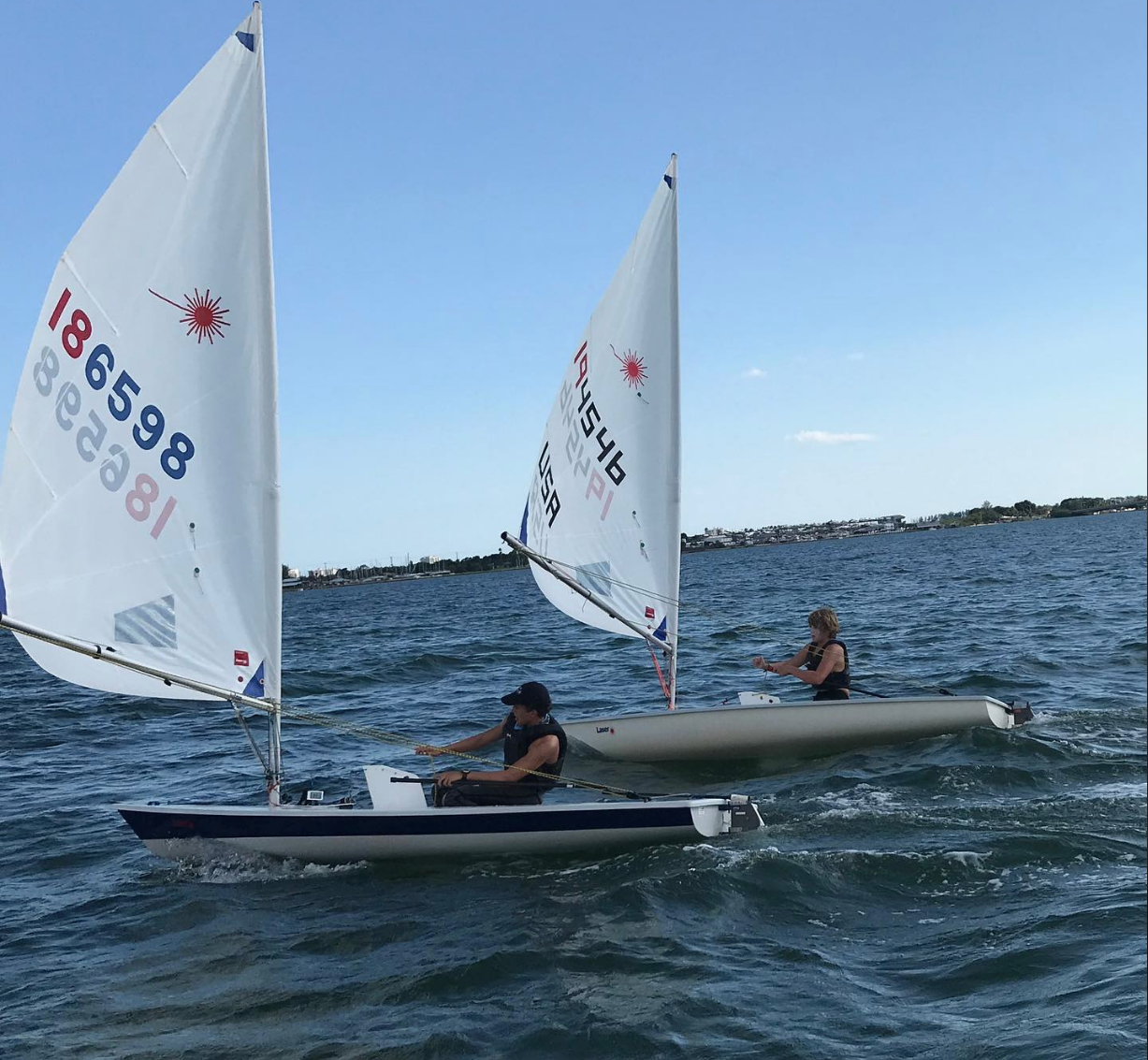Stand up paddleboards and kayaks grant you the use of a paddle to move you through the water. Hip hydrofoils come equipped with a fin with wings to allow surfers to skim above the surface. Boats throw a line out to pull wakeboarders behind at top speeds. Then there are particular watersports that depend less on the power of electric motors or a bladed pole, and more on your own wits and muscle to propel you through water.
Water enthusiasts are channeling the winds to guide them. From Hobie Cats and sailing skiffs to wing surfing and kiteboarding, people want to rely less on man-made tools and more on the direction of the wind for a thrilling, hard-to-control ride. With much more experience needed to read and navigate the pulling force and physics of the wind, many instructors for these activities require lessons on land first before even getting in the water. The more mph in the air there is, the more lift, agility and speed you get. The direction and power of the winds determine your experience, and what control you do have is maneuvered through the belt and handlebar of your kite. Though more intricate, dynamic, expensive and harder to come by in terms of ideal weather conditions to ride, that isn’t stopping people from wanting to learn.

Local kiteboarding instructor and “professional waterman” Drew Christianson says he’s getting more calls than ever of people wanting to get into the sport. “All my lessons are taught in areas with shallow water with the best wind conditions,” he says. “Most lessons will be brought out to the Sunshine Skyway where we can ride any wind direction in waist-deep water.” Mandatory introduction classes cover all the basics to become a self-sufficient kiteboarder, including wind theory, gear anatomy, gear setup and safety options.
“These easy 1,2,3’s are before getting in the water and flying the kite in a controlled fashion,” he says. Once in the water, you’ll learn how to fly the kite, then add the board into the picture. Remaining lessons focus on riding upwind, mastering bodydragging and transitions. Advanced students can also have Drew coach on jumping, flips, unhooking and landing tricks. He most recently has gotten into teaching wing surfing as well, which combines kitesurfing and foiling for an even faster and more challenging ride.
Meanwhile Vanhunks Boarding Co. can’t keep its Twin Tip or Directional kiteboards in stock, says owner Tyrone Cochrane. Customers come in just about every day looking for equipment to get them started. In-store demos are available to book as well before investing in the pricey new hobby. Meanwhile, nonprofit Sarasota Youth Sailing (SYS) continues to host packed summer camps of kids wanting to learn the coastal craft of O’Pen Skiff sailing. These high-performance, one-person shells have evolved into competitive classes with races held all over the world.

“There’s a reason this boat is so popular,” says SYS Executive Director Mary Trichter. “It’s definitely a summer-camp fave!” Kids learn all the necessary seamanship skills for single-person sailing including gaging knots, upwind/downwind steering, capsize recovery, rigging/de-rigging, casting off/landing, tacking/jibing through the wind and more. Farther up the Gulf Coast, watercraft rental company Coastal Watersports offers free sailing lessons on its Hobie Wave for beginning sailors when rented—launching right from the beautiful Anna Maria Island beaches. They also have an 18-foot catamaran for intermediate and advanced sailors. SRQ
Drew Christianson Coaching, kiterdrew@gmail.com, 941-780-5744, drewchristianson.com. Vanhunks Boarding Co., 6227 N. Washington Blvd., Sarasota, 941-218-9095, vanhunksboarding.com. Sarasota Youth Sailing, 1717 Ken Thompson Pkwy., Sarasota, 941-288-2355, sarasotayouthsailing.org. Coastal Watersports, 4711 Gulf of Mexico Dr., Longboat Key, and 1301 Gulf Dr. N., Bradenton Beach, 941-778-4969, coastalwatersportsami.com.








